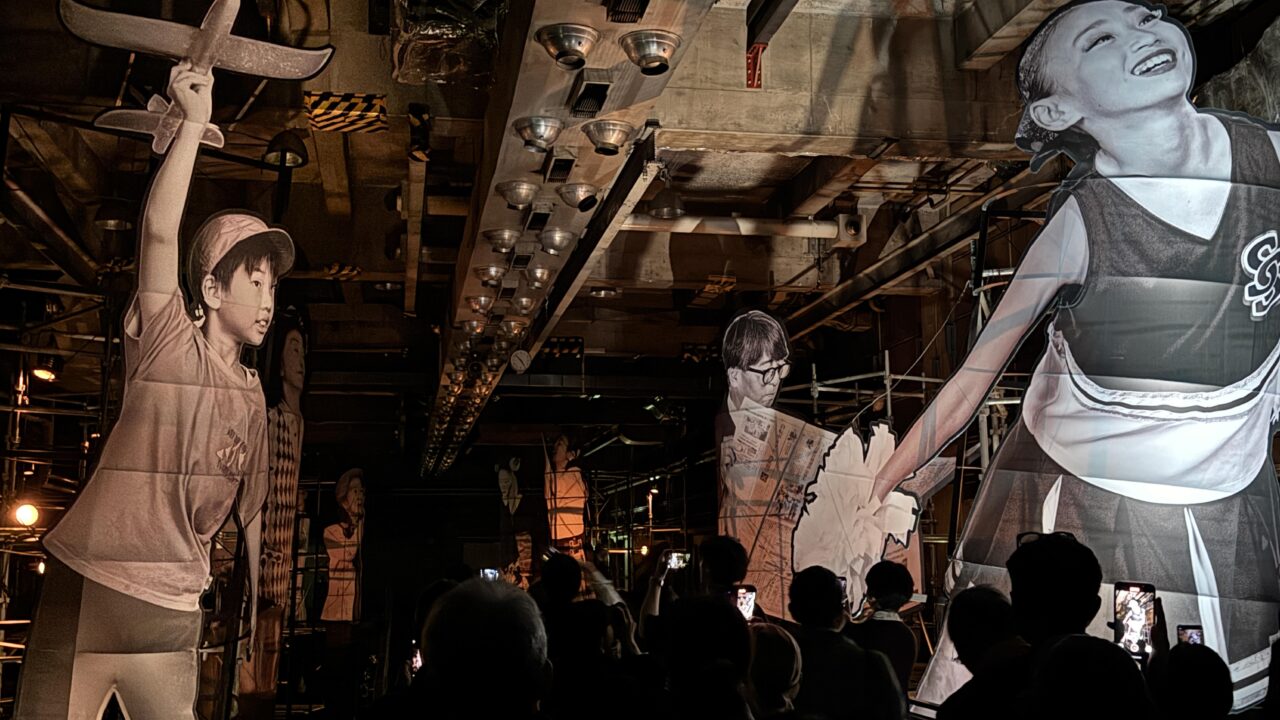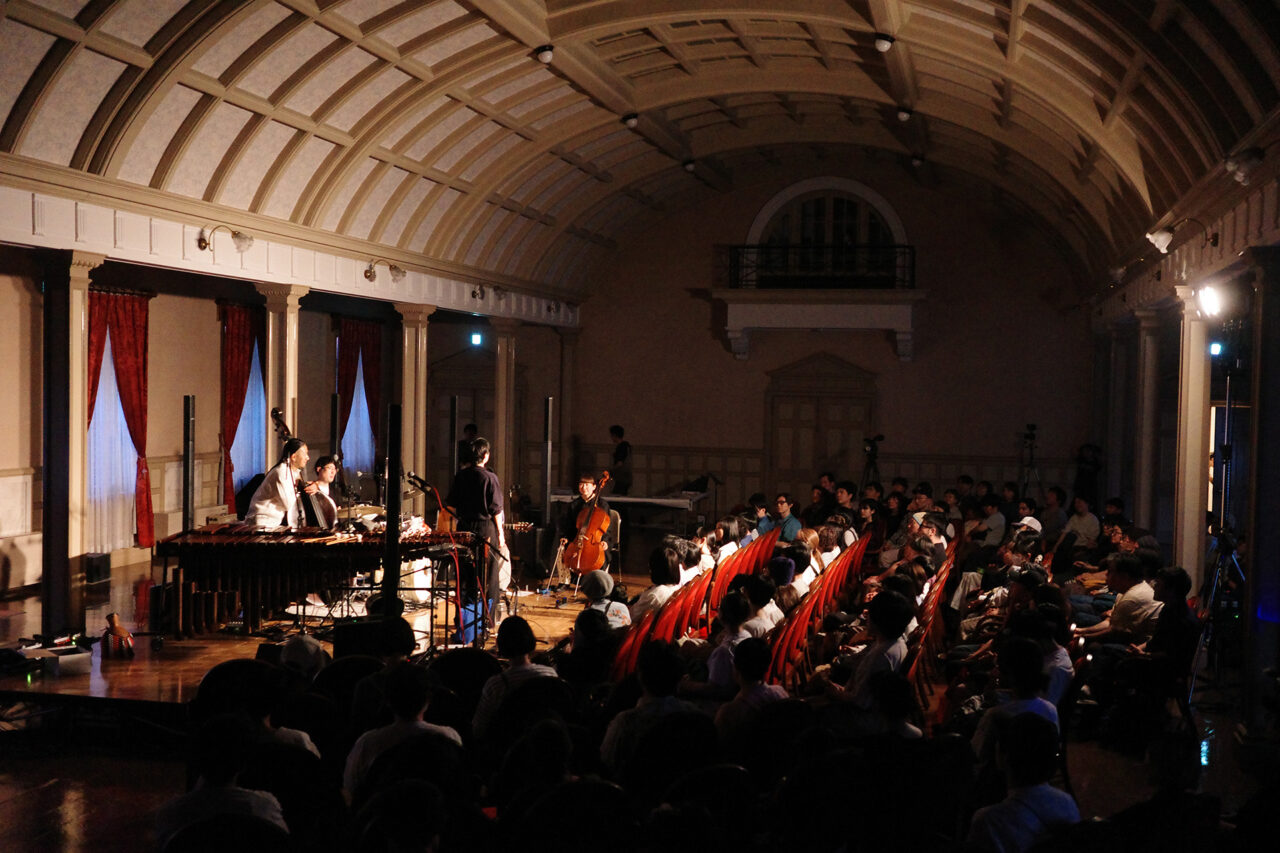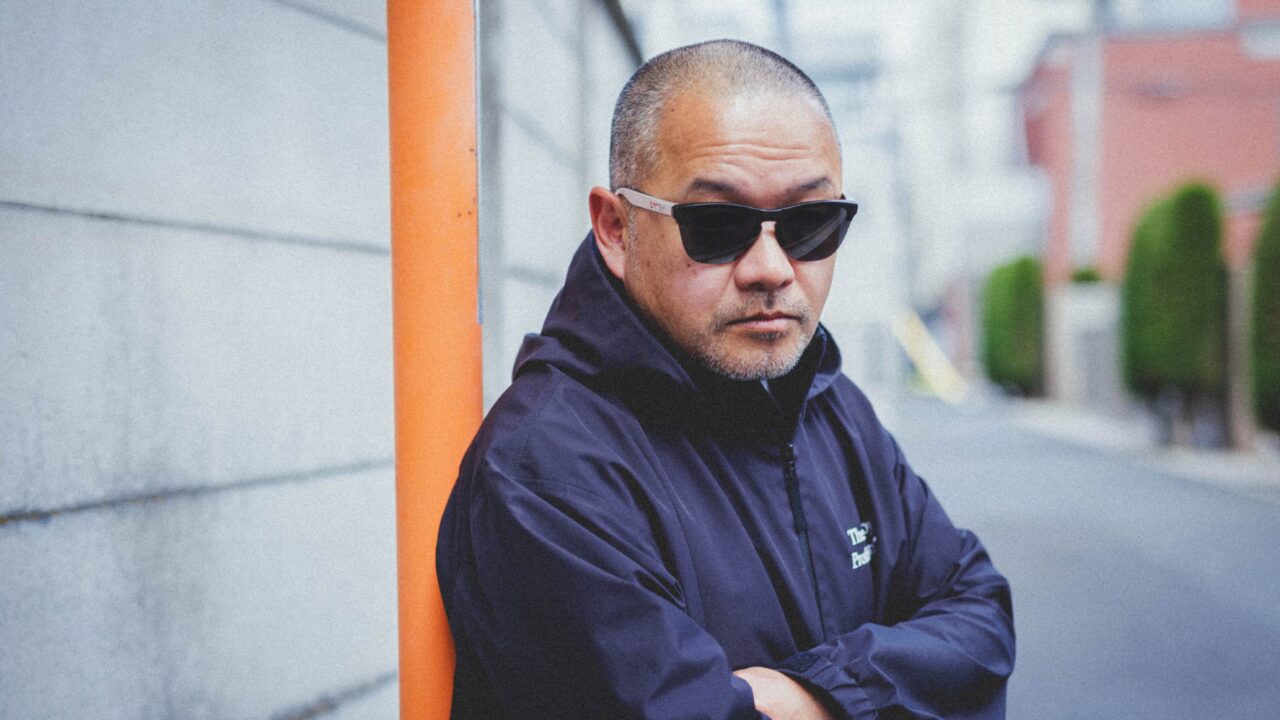A circle of friends connected by goofy touch! The “FIST BUMP” corner of the radio program “GRAND MARQUEE” features people who live and enjoy Tokyo in a relay format.
On June 14, decorator Kenta Haraki, introduced by Yuki Ishikawa, general manager of the Brazilian Jiu-Jitsu dojo “Carpe Diem,” will appear. We asked Mr. Haraki, who worked in textile design for swimwear and underwear until the age of 25 before changing careers and working for 10 years at “GOO FACTORY,” an interior design company, about his work as a “decorator” and the source of his inspiration, after which he went independent this past April.
INDEX
What is the job of a “decorator” who decorates spaces?
Takano (MC): According to Mr. Ishikawa, “He looks like an eccentric, but actually he is a sensible person.
Haraki: I used to have a mohawk with long hair (laughs).
Celeina (MC): I guess he means that his fashion is a bit sharp, but when you talk to him, he is a very mild-mannered person (laughs).
Takano: Maybe that was the impression that Mr. Ishikawa had (laughs).
Celeina: Now, I would like to ask you about your work. First of all, what kind of work do you do as a “decorator”?
Haraki: I decorate spaces for a living, such as window displays, event space decorations, and commercial space decorations.
Takano: This is the first time I have heard the word “decorator.
Haraki: I guess not many people call themselves decorators, and my mentor’s mentor (Mr. Jun Okiyama) started the term. In English-speaking countries, the word “decorator” is used. The Japanese word for such a profession is “decorator.
Celeina: What exactly do you do when you say “decorator”?
Haraki: Specifically, I do a lot of work for clothing stores. I make fixtures for pop-up spaces. Also, for example, I make hanger racks. I don’t have to go to the trouble of making them, but I amplify the world that the brand wants to convey and convey it to everyone.
Celeina: That’s deep.
Takano: Do the stores convey their images to Mr. Haraki, and then you make suggestions on how to do it?
Haraki: Yes, that’s right. Sometimes I just leave it to them, or sometimes I ask them to do whatever they want. Sometimes I get a general idea of what I want to do, and then I make a proposal.
Celeina: It is difficult to convey an image of a space in words, isn’t it? We exchange the image in words, and Mr. Haraki gives it shape. ……
Haraki: My job is to complete the project by exchanging words and pictures.
Celeina: How did you start this job in the first place?
Haraki: It all started with my previous job at GOO FACTORY, a company that made clothing stores, which I loved. I was in a completely different industry, but the job description said that I could still work there, so I applied for the job, and just like that, there I was.
I was in a completely different industry: So you worked there for 10 years and became independent this spring.
Haraki: Yes, I quit at the end of March, took a break for about a month, and started working at the beginning of May.

Celeina: How do you feel now that you are independent?
Haraki: It’s only been a little over a month, so I don’t have much to say about it, but I felt that the good and the bad are inextricably linked, and that I have to make decisions on my own. That is what I felt after becoming independent.
Takano: How do you manage your time?
Haraki: No, I am not good at it.
Celeina: I am independent, and Takano-san is also independent: ……
Takano: You could say that.
Celeina: I mean, I have to do some input and I have to do some output. How do you divide your time and pace your mind?
Haraki: That is a big part. Like switching your mind.
Celeina: Do you have any routine that you do when you want to switch on and off?
Haraki: I smoke cigarettes, even though it is against the times.
Takano: That is also a good way to switch off.
Celeina: It also serves as a space divider.
Haraki: And then there is jiu-jitsu.
Takano: There it is (laughs). (laughs) Keyword of the week.
Celeina: How many times a week do you practice jiu-jitsu?
Haraki: I think it would be good if I could go twice a week. But some people who like it go 5 to 6 times a week.
Celeina: You do it every day, don’t you?
Haraki: If I go, I get hooked because there are so many people who are there every time I go.
Takano: How did you get hooked?
Haraki: When I was in my thirties, I started eating less and less. I felt a sense of crisis that I was becoming weak as a man. I had always liked sports and was interested in martial arts, so I decided to try it out.
Takano: And you have been doing it ever since?
Haraki: Yes, I have. It has become a part of my life.
Takano: Is there a reason why you continue to do it?
Haraki: It’s interesting. In sparring, I never lose, but when I tap, I feel frustrated. In the age of monkeys, if you tapped, you would have died. The frustration of losing and not being able to leave offspring, for example, is directly connected to instinct. That’s what I feel.
Takano: This week, everyone is practicing Brazilian jiu-jitsu. We are getting more and more interested in it (laughs).
Haraki: Please come and experience it (laughs).
Celeina: Now, I would like to send you a song. I asked Mr. Haraki to choose a song that he would like everyone to listen to together on the radio at this time.
Haraki: It’s “Landscape with Itosugi” by Yoshi Ogura, which is sampled in the outro of BUDDHA BRAND’s “Human Power Plant. It’s related to my work, but it’s nice to find a source. Also, I chose this song because it sounds like evening.
Sources of Inspiration for Decorators
Takano: Your work, Mr. Haraki, is a kind of world-building work, isn’t it? It’s a job that creates. Where do your inspirations and ideas come from?
Haraki: There are many sources. For example, I think that everyone who creates does things like looking at art exhibitions. Other than that, I try to feel the scenery of the city. For example, I try to get a sense of the cityscape, like the way they split the crazy windows. I fix them with tape. There is no intention to make it look cool. But I could feel something. Also, when I went to Machinuka and saw Saran Wrap wrapped around a remote control, I thought, “This could be useful.
Takano: That’s interesting. All that wrapping and repairing with duct tape is all about function, isn’t it? It’s all about functionality, but then you find something design-y in the functionality.
Haraki: It’s like being inspired. I think it would be cool if I made some modifications to it.
Celeina: Now, “FIST BUMP” is a circle of friends connected by “go-touch,” and we are asking you to introduce us to your friends.
Haraki: This is Kosuke Itoda from Transit General Office. We have been friends since our school days, so we have known each other for more than 10 years. We often work together. He does event planning and production, and I take care of the interior design.
Celeina: I see. In a word, how would you describe him?
Haraki: In a good sense, he is a meek person.
Celeina: Thank you very much. Tomorrow, I will connect you to Mr. Kosuke Idota of Transit General Office. Thank you very much, Kenta Haraki, decorator.
Haraki: Thank you very much.

GRAND MARQUEE

J-WAVE (81.3FM) Mon-Thu 16:00 – 18:50
Navigator: Shinya Takano, Celeina Ann


























